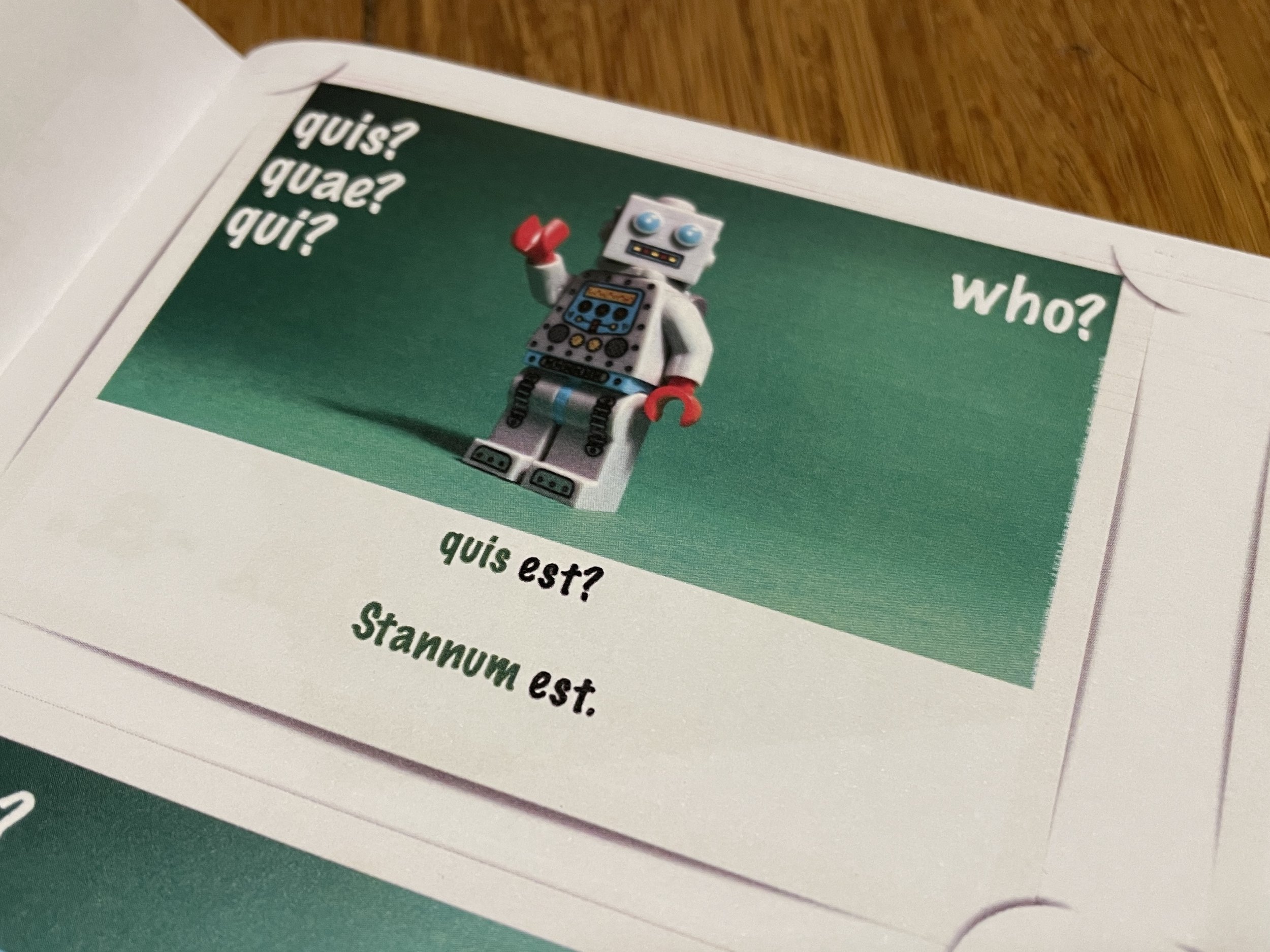Salvēte, sodālēs.
Ecce is a interesting word. It is used to draw somebody’s attention to something. Ecce mea īnsula, for example, means something like Here is my island, See my island, Behold my island and Look, it’s my island. You get the idea.
from Lingua Latīna Per Sē Illustrāta, page 16
This picture makes it clear what a liber est, and also introduces two new adjectives, antīquus and novus (the double-headed arrow tells us that they are opposites).
from Lingua Latīna Per Sē Illustrāta, page 16
But there’s more. Today’s short reading (lines 80-84) also introduces the word titulus. You can check your understanding of all the new words after the reading. (The Latin for new words, by the way, is nova vocābula.)
Lingua Latīna Per Sē Illustrāta : Capitulum Secundum : lines 80-84. To be fair to the publisher, after Capitulum Secundum extracts will not be given - you will need a copy of the textbook of your own.
-
antīquus : old, ancient
novus : new, young
titulus : title
Lastly, just be mindful of the close similarity between the look of librī (books) and līberī (fīliae et filiī).
Satis est. In our next lesson, we will complete our reading of Capitulum Secundum.











































